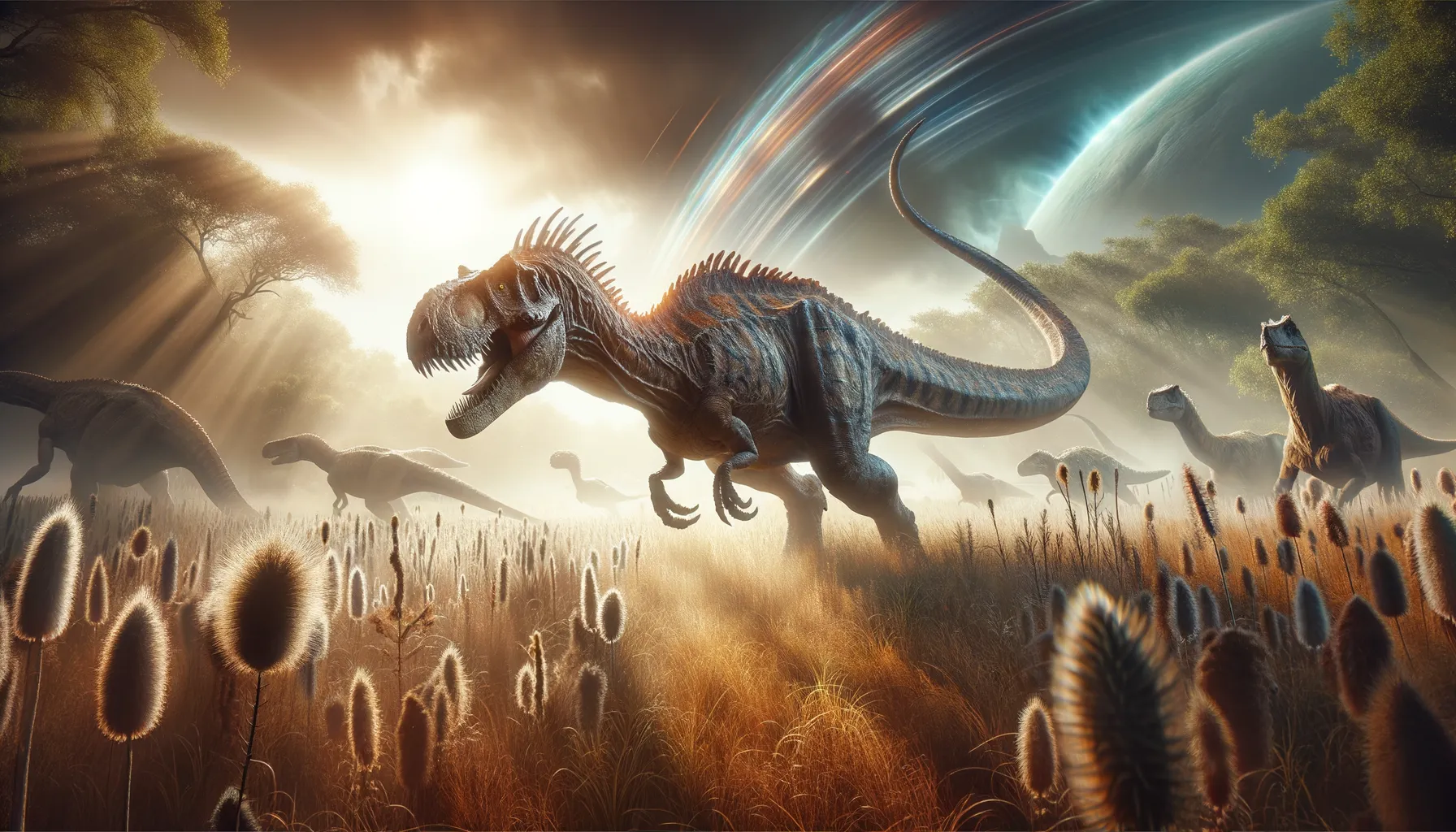
Crataeomus
Dominant predator of the Jurassic plains!
Period
Jurassic
Length
Measured roughly 9 meters in length.
Height
Stood about 3 meters tall at the hip.
Weight
Weighed approximately 1000 kg.
Crataeomus was a remarkable dinosaur known for its agility and keen hunting abilities. It roamed the plains of prehistoric North America, thriving in a dynamic ecosystem of predators and prey. This dinosaur was known for its formidable size and strength, making it a dominant force in its environment. Its fossil remains have offered significant insights into the life and times of the Jurassic period.
Diet
Crataeomus was a carnivore, primarily preying on smaller dinosaurs and possibly scavenging when the opportunity arose. Its diet consisted largely of meat, which it likely hunted with precision.
Hunting
As an apex predator, Crataeomus likely used its speed and power to ambush prey. It may have employed stealth tactics, using its surroundings to surprise its targets.
Environmental challenges
Crataeomus faced challenges such as climatic shifts which affected prey availability. Volcanic activity and periodic droughts may have presented additional survival hurdles. Resource competition with other predators likely influenced its hunting success and territorial disputes.
Speed
Fast runner, adapted for quick movements.
Lifespan
Estimated to live around 20 years.
First discovery
Discovered in the late 19th century in North America.
Fun Facts
- Crataeomus is believed to have lived during the early Cretaceous period, about 130 million years ago.
- This dinosaur was a herbivore, meaning it primarily fed on plants and leaves.
- Fossils of Crataeomus have largely been found in regions that are today part of Africa.
- Crataeomus is known for its distinctive crest on its head, which may have been used for display or recognition among its species.
- Despite its size, Crataeomus was likely a relatively gentle creature, using its speed and agility to escape predators.
- The name Crataeomus means 'strong shoulder', referring to its powerful front limbs that might have been used for pushing through vegetation.
- Children often imagine dinosaurs as giants, but Crataeomus was about the size of a modern-day horse.
Growth and Development
Juvenile Crataeomus likely grew rapidly, requiring ample food supplies to reach maturity. Growth rates may have been influenced by environmental conditions, as well as the availability of resources. Parental care, if present, would have played a crucial role in early development.
Habitat
Crataeomus inhabited dense forests and open plains, adapting well to varied environments. These areas provided the cover necessary for hunting and ample prey opportunities. Aquatic bodies nearby could have served as vital water sources.
Interaction with other species
Crataeomus likely competed with other large predators for territory and food. It could have preyed upon herbivorous dinosaurs, impacting their population dynamics. Recognizing its position, smaller species might have developed alert behaviors to avoid detection.
Natural lifespan
Crataeomus lived an estimated natural lifespan of two decades.
Reproduction
Crataeomus likely laid eggs, which were possibly incubated in ground nests. Social behavior during mating seasons might have included ritualistic displays to attract partners. Hatchlings were probably vulnerable, requiring protection until independent.
Social behaviour
Crataeomus may have been solitary or formed small groups, especially during hunting. Territorial and displays of dominance could have helped in defending resources. Cooperation in small groups might have increased hunting success.
Fossil locations
Fossilized remains of Crataeomus have primarily been found in North American sedimentary rock formations. These fossils provide a crucial glimpse into the diversity of Jurassic predators. Discoveries have been instrumental in understanding dinosaur biodiversity in this region.
